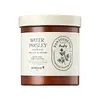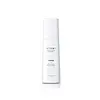What's inside
What's inside
 Key Ingredients
Key Ingredients

 Benefits
Benefits

 Concerns
Concerns

 Ingredients Side-by-side
Ingredients Side-by-side

Water
Skin ConditioningOenanthe Javanica Extract
AntimicrobialButylene Glycol
Humectant1,2-Hexanediol
Skin ConditioningDipropylene Glycol
HumectantCitrus Junos Fruit Extract
Skin ConditioningPanthenol
Skin ConditioningPPG-13-Decyltetradeceth-24
EmulsifyingBetaine
HumectantEthylhexylglycerin
Skin ConditioningFicus Carica Fruit Extract
HumectantAllantoin
Skin ConditioningGlycerin
HumectantPropanediol
SolventDiphenyl Dimethicone
EmollientTriethylhexanoin
MaskingCapryloyl Salicylic Acid
ExfoliatingCentella Asiatica Extract
CleansingSodium Citrate
BufferingSalvia Officinalis Leaf Extract
CleansingChamomilla Recutita Extract
Skin ConditioningDipotassium Glycyrrhizate
HumectantSodium Phytate
Polyglyceryl-10 Oleate
Skin ConditioningHydrogenated Lecithin
EmulsifyingSodium Hyaluronate
HumectantPhospholipids
Skin ConditioningRhodomyrtus Tomentosa Fruit Extract
HumectantEucalyptus Globulus Leaf Oil
PerfumingLeuconostoc/Radish Root Ferment Filtrate
AntimicrobialCitrus Aurantium Bergamia Fruit Oil
MaskingHelianthus Annuus Seed Oil
EmollientPantothenic Acid
Skin ConditioningSalvianolic Acid B
Skin ConditioningWater, Oenanthe Javanica Extract, Butylene Glycol, 1,2-Hexanediol, Dipropylene Glycol, Citrus Junos Fruit Extract, Panthenol, PPG-13-Decyltetradeceth-24, Betaine, Ethylhexylglycerin, Ficus Carica Fruit Extract, Allantoin, Glycerin, Propanediol, Diphenyl Dimethicone, Triethylhexanoin, Capryloyl Salicylic Acid, Centella Asiatica Extract, Sodium Citrate, Salvia Officinalis Leaf Extract, Chamomilla Recutita Extract, Dipotassium Glycyrrhizate, Sodium Phytate, Polyglyceryl-10 Oleate, Hydrogenated Lecithin, Sodium Hyaluronate, Phospholipids, Rhodomyrtus Tomentosa Fruit Extract, Eucalyptus Globulus Leaf Oil, Leuconostoc/Radish Root Ferment Filtrate, Citrus Aurantium Bergamia Fruit Oil, Helianthus Annuus Seed Oil, Pantothenic Acid, Salvianolic Acid B
Water
Skin ConditioningPyrus Malus Fruit Water
MaskingBetaine
HumectantGlycerin
Humectant1,2-Hexanediol
Skin ConditioningMethylpropanediol
SolventHouttuynia Cordata Extract
Skin ConditioningLavandula Angustifolia Extract
Skin ConditioningRosmarinus Officinalis Leaf Extract
AntimicrobialOcimum Basilicum Flower/Leaf Extract
TonicAnthemis Nobilis Flower Extract
MaskingFoeniculum Vulgare Fruit Extract
EmollientCentella Asiatica Extract
CleansingFicus Carica Fruit Extract
HumectantDiospyros Kaki Leaf Extract
Skin ProtectingPortulaca Oleracea Extract
Skin ConditioningAlgae Extract
EmollientEclipta Prostrata Leaf Extract
Skin ConditioningPhellinus Linteus Extract
Skin ConditioningCordyceps Sinensis Extract
AntioxidantSparassis Crispa Extract
Emulsion StabilisingUlmus Davidiana Root Extract
Skin ConditioningAmaranthus Caudatus Seed Extract
Skin ConditioningCamellia Sinensis Leaf Extract
AntimicrobialCamellia Sinensis Leaf Water
MaskingAloe Barbadensis Leaf Juice
Skin ConditioningHydrogenated Lecithin
EmulsifyingArgania Spinosa Kernel Oil
EmollientSodium Hyaluronate
HumectantPolyglyceryl-10 Laurate
Skin ConditioningCarbomer
Emulsion StabilisingDipropylene Glycol
HumectantDiphenyl Dimethicone
EmollientTriethylhexanoin
MaskingTromethamine
BufferingButylene Glycol
HumectantPanthenol
Skin ConditioningBiosaccharide Gum-1
HumectantTocopheryl Acetate
AntioxidantBeta-Glucan
Skin ConditioningDimethicone
EmollientSqualane
EmollientHydrogenated Polyisobutene
EmollientDipotassium Glycyrrhizate
HumectantBifida Ferment Lysate
Skin ConditioningPolyglyceryl-10 Myristate
Skin ConditioningIsononyl Isononanoate
EmollientPolyglyceryl-10 Stearate
Skin ConditioningDisodium EDTA
Caprylic/Capric Triglyceride
MaskingCetearyl Alcohol
EmollientStearic Acid
CleansingButyrospermum Parkii Butter
Skin ConditioningPolyglyceryl-2 Dipolyhydroxystearate
Skin ConditioningFructooligosaccharides
HumectantLecithin
EmollientCellulose Gum
Emulsion StabilisingCeramide NP
Skin ConditioningHydrolyzed Hyaluronic Acid
HumectantInulin Lauryl Carbamate
Emulsion StabilisingDisodium Stearoyl Glutamate
CleansingSodium Hyaluronate Crosspolymer
HumectantHyaluronic Acid
HumectantPalmitoyl Pentapeptide-4
Skin ConditioningHydrolyzed Sodium Hyaluronate
Skin ConditioningPolysorbate 20
EmulsifyingParfum
MaskingPentylene Glycol
Skin ConditioningEthylhexylglycerin
Skin ConditioningWater, Pyrus Malus Fruit Water, Betaine, Glycerin, 1,2-Hexanediol, Methylpropanediol, Houttuynia Cordata Extract, Lavandula Angustifolia Extract, Rosmarinus Officinalis Leaf Extract, Ocimum Basilicum Flower/Leaf Extract, Anthemis Nobilis Flower Extract, Foeniculum Vulgare Fruit Extract, Centella Asiatica Extract, Ficus Carica Fruit Extract, Diospyros Kaki Leaf Extract, Portulaca Oleracea Extract, Algae Extract, Eclipta Prostrata Leaf Extract, Phellinus Linteus Extract, Cordyceps Sinensis Extract, Sparassis Crispa Extract, Ulmus Davidiana Root Extract, Amaranthus Caudatus Seed Extract, Camellia Sinensis Leaf Extract, Camellia Sinensis Leaf Water, Aloe Barbadensis Leaf Juice, Hydrogenated Lecithin, Argania Spinosa Kernel Oil, Sodium Hyaluronate, Polyglyceryl-10 Laurate, Carbomer, Dipropylene Glycol, Diphenyl Dimethicone, Triethylhexanoin, Tromethamine, Butylene Glycol, Panthenol, Biosaccharide Gum-1, Tocopheryl Acetate, Beta-Glucan, Dimethicone, Squalane, Hydrogenated Polyisobutene, Dipotassium Glycyrrhizate, Bifida Ferment Lysate, Polyglyceryl-10 Myristate, Isononyl Isononanoate, Polyglyceryl-10 Stearate, Disodium EDTA, Caprylic/Capric Triglyceride, Cetearyl Alcohol, Stearic Acid, Butyrospermum Parkii Butter, Polyglyceryl-2 Dipolyhydroxystearate, Fructooligosaccharides, Lecithin, Cellulose Gum, Ceramide NP, Hydrolyzed Hyaluronic Acid, Inulin Lauryl Carbamate, Disodium Stearoyl Glutamate, Sodium Hyaluronate Crosspolymer, Hyaluronic Acid, Palmitoyl Pentapeptide-4, Hydrolyzed Sodium Hyaluronate, Polysorbate 20, Parfum, Pentylene Glycol, Ethylhexylglycerin
Ingredients Explained
These ingredients are found in both products.
Ingredients higher up in an ingredient list are typically present in a larger amount.
1,2-Hexanediol is a synthetic liquid and another multi-functional powerhouse.
It is a:
- Humectant, drawing moisture into the skin
- Emollient, helping to soften skin
- Solvent, dispersing and stabilizing formulas
- Preservative booster, enhancing the antimicrobial activity of other preservatives
Betaine is a common humectant (a substance that promotes retention of moisture). It's known to be gentle on the skin and can help balance hydration.
This ingredient is best for improving hydration and soothing irritated skin. Studies also show it helps even out skin tone.
Fun fact: Betaine is naturally created in the skin and body. The kind found within cosmetic products can be either plant-derived or synthetic.
Another name for betaine is trimethylglycine.
Learn more about BetaineButylene Glycol (or BG) is used within cosmetic products for a few different reasons:
Overall, Butylene Glycol is a safe and well-rounded ingredient that works well with other ingredients.
Though this ingredient works well with most skin types, some people with sensitive skin may experience a reaction such as allergic rashes, closed comedones, or itchiness.
Learn more about Butylene GlycolCentella Asiatica Extract (Centella) is derived from an herb native to Southeast Asia. It is famous for its anti-inflammatory and soothing properties.
Centella is rich in antioxidants and amino acids, such as Madecassic Acid and Asiaticoside.
Studies show the compounds in centella help with:
The combination of all these properties makes centella effective at soothing, hydrating, and protecting the skin.
Other great components of centella include Vitamin A, vitamin C, several B vitamins, and Asiatic Acid.
Fun fact: Centella has been used as a medicine and in food for many centuries. As a medicine, it is used to treat burns, scratches, and wounds.
Learn more about Centella Asiatica ExtractDiphenyl Dimethicone is a type of silicone.
Dipotassium Glycyrrhizate comes from licorice root.
Extracts of licorice have demonstrated to have antibacterial, anti‐inflammatory, antiviral, antioxidant properties.
One component, glabridin, has extra potent antioxidant and soothing properties. It has also been found to block pigmentation from UVB rays in guinea pigs.
Licorice Root also contains a flavonoid. Flavonoids are a natural substance from in plants. Flavonoids also have antioxidant properties.
Another component, glycyrrhizin, has been found to have anti-inflammatory and antimicrobial benefits. This may make licorice root extract effective at treating acne. However, more research is needed to support this.
Liquiritin is one of the flavone compounds found in licorice. It has been found to help lighten skin by preventing tyrosinase from reacting with tyrosine. When the two react, protein is converted to melanin. Melanin is the substance in your body that gives your features pigmentation.
Licorice root is native to Southern Europe and Asia. It has been used in traditional Chinese medicine to help with respiratory issues.
Learn more about Dipotassium GlycyrrhizateDipropylene Glycol is a synthetically created humectant, stabilizer, and solvent.
This ingredient helps:
Dipropylene glycol is technically an alcohol, but it belongs to the glycol family (often considered part of the ‘good’ alcohols). This means it is hydrating and gentle on skin unlike drying solvent alcohols like denatured alcohol.
As a masking agent, Dipropylene Glycol can be used to cover the smell of other ingredients. However, it does not have a scent.
Studies show Dipropylene Glycol is considered safe to use in skincare.
Learn more about Dipropylene GlycolEthylhexylglycerin (we can't pronounce this either) is commonly used as a preservative and skin softener. It is derived from glyceryl.
You might see Ethylhexylglycerin often paired with other preservatives such as phenoxyethanol. Ethylhexylglycerin has been found to increase the effectiveness of these other preservatives.
Ficus Carica Fruit Extract comes from the fruit known as the fig. Figs are rich in antioxidants and helps hydrate the skin.
Figs also contain fatty acids and Vitamins A, B1, and B2.
As a humectant, figs are able to draw moisture from the air to your skin. This helps keep your skin hydrated.
Learn more about Ficus Carica Fruit ExtractGlycerin is already naturally found in your skin. It helps moisturize and protect your skin.
A study from 2016 found glycerin to be more effective as a humectant than AHAs and hyaluronic acid.
As a humectant, it helps the skin stay hydrated by pulling moisture to your skin. The low molecular weight of glycerin allows it to pull moisture into the deeper layers of your skin.
Hydrated skin improves your skin barrier; Your skin barrier helps protect against irritants and bacteria.
Glycerin has also been found to have antimicrobial and antiviral properties. Due to these properties, glycerin is often used in wound and burn treatments.
In cosmetics, glycerin is usually derived from plants such as soybean or palm. However, it can also be sourced from animals, such as tallow or animal fat.
This ingredient is organic, colorless, odorless, and non-toxic.
Glycerin is the name for this ingredient in American English. British English uses Glycerol/Glycerine.
Learn more about GlycerinHydrogenated Lecithin is created from the hydrogenation of lecithin (a group of phospholipids). Hydrogenation is a chemical reaction between hydrogen and another element.
This ingredient is an emollient and emulsifier. As an emollient, it helps soften skin by trapping moisture within. As an emulsifier, it prevents oil and water ingredients from separating.
Panthenol is a common ingredient that helps hydrate and soothe the skin. It is found naturally in our skin and hair.
There are two forms of panthenol: D and L.
D-panthenol is also known as dexpanthenol. Most cosmetics use dexpanthenol or a mixture of D and L-panthenol.
Panthenol is famous due to its ability to go deeper into the skin's layers. Using this ingredient has numerous pros (and no cons):
Like hyaluronic acid, panthenol is a humectant. Humectants are able to bind and hold large amounts of water to keep skin hydrated.
This ingredient works well for wound healing. It works by increasing tissue in the wound and helps close open wounds.
Once oxidized, panthenol converts to pantothenic acid. Panthothenic acid is found in all living cells.
This ingredient is also referred to as pro-vitamin B5.
Learn more about PanthenolSodium Hyaluronate is hyaluronic acid's salt form. It is commonly derived from the sodium salt of hyaluronic acid.
Like hyaluronic acid, it is great at holding water and acts as a humectant. This makes it a great skin hydrating ingredient.
Sodium Hyaluronate is naturally occurring in our bodies and is mostly found in eye fluid and joints.
These are some other common types of Hyaluronic Acid:
Learn more about Sodium HyaluronateTriethylhexanoin is created from glycerin and 2-ethylhexanoic acid. It is a solvent and emollient.
As a solvent, Triethylhexanoin helps dissolve ingredients to stable bases or help evenly distribute ingredients throughout the product.
It is also an emollient and helps condition the skin.
Learn more about TriethylhexanoinWater. It's the most common cosmetic ingredient of all. You'll usually see it at the top of ingredient lists, meaning that it makes up the largest part of the product.
So why is it so popular? Water most often acts as a solvent - this means that it helps dissolve other ingredients into the formulation.
You'll also recognize water as that liquid we all need to stay alive. If you see this, drink a glass of water. Stay hydrated!
Learn more about Water